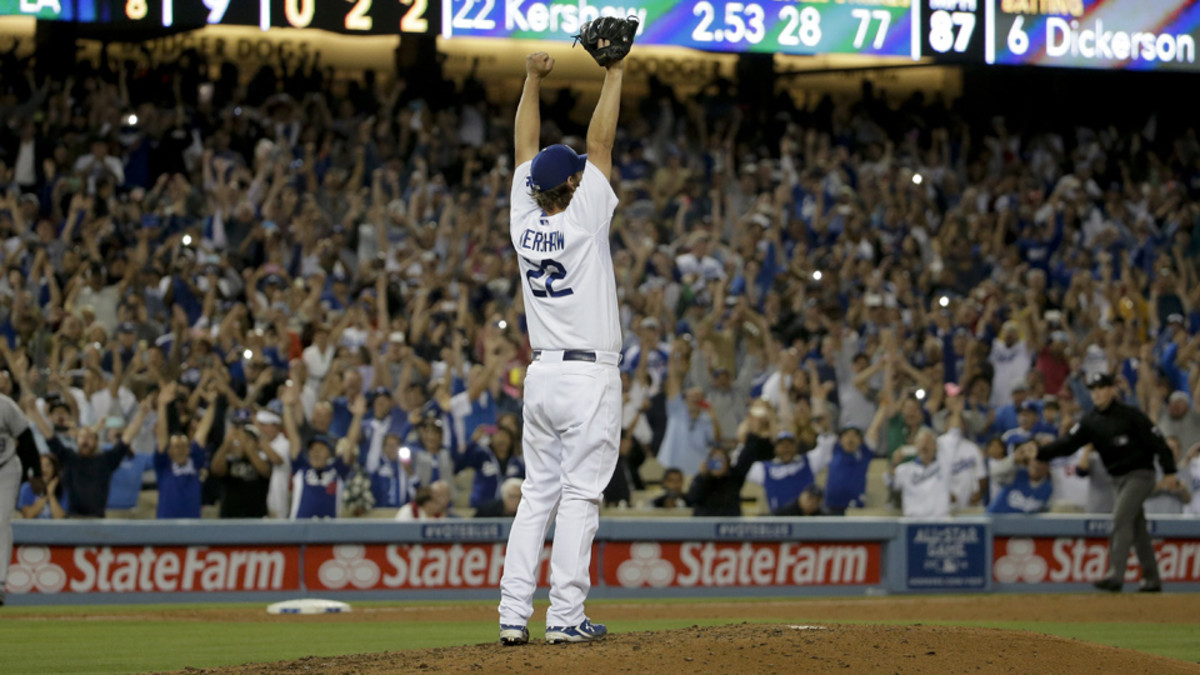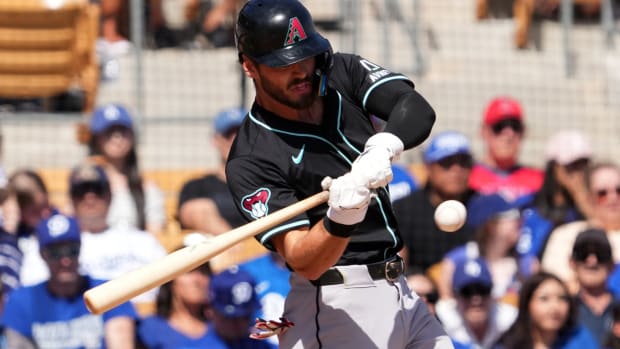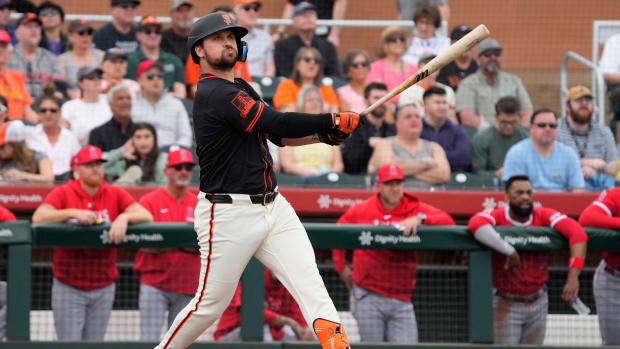By numbers, Clayton Kershaw more dominant in 2014 than ever before
The no-hitter that Clayton Kershaw threw on Wednesday night was easily the best game of his career, of that there's no doubt. Marred only by Hanley Ramirez's throwing error to lead off the seventh inning, his no-walk, 15-strikeout performance produced the second-highest Game Score of any pitcher in a nine-inning game since the start of the 1914 season. What's more up for debate is whether the 26-year-old lefty is on his way to the best season of his seven-year career.
Because he missed 31 games due to a strained teres major muscle, Kershaw won't threaten his career highs in either innings (236, set last year) or strikeouts (248, set in 2011). Matching his 21 wins from 2011 would be a longshot. He has seven thus far, and roughly 18 starts remaining depending upon how manager Don Mattingly aligns his rotation, so to notch even 15 wins in that span would take extraordinarily good luck in terms of run support, bullpen support and timing. Worth noting: For as shaky as the Dodgers' bullpen has been this season, they have yet to cost him a win. His full-season low in that category is two, set in 2011.
Likewise, the three-time defending NL ERA champion has a ways to go to win a fourth crown. His 2.52 mark is well off last year's career-best 1.83 and his 2011 mark of 2.28. At the moment, he's still 9 2/3 innings shy of qualifying for the league ERA title (one inning per team game), with 64 1/3 innings to the Dodgers' 74 games. If he did qualify, his current ERA would rank only seventh in the league, a hair behind fellow no-hit author Josh Beckett and 0.60 behind league leader Johnny Cueto.
AWARDS WATCH: Reds' Cueto comfortably in front in NL Cy Young race
Kershaw's ERA has been inflated by the things over which he has less control, namely higher-than-normal batting average on balls in play and rate of home runs per fly ball. On the former note, his .311 thus far is 56 points higher than last year's career-low .255, and 34 points lower than his overall career mark; because of that, his 7.1 hits per nine is highest since his 2008 rookie season, and well off last year's career-best 6.25 per nine. On a similar note, his 10.8 percent HR/FB rate is his highest since 2008, nearly double last year's 5.8 percent and four points above his career 6.8 percent. Because of that, his 0.6 homers per nine is merely in line with his career rate (off by 0.0027, if you want to get technical). His 2009 mark of 0.37 per nine is his best; to match that, he'd have to peel off a homerless streak of 33 2/3 innings. That would still be dwarfed by his 90-inning streak from 2009.
It's the business of strikeouts and walks where one can make the case that we're seeing Peak Kershaw, as his numbers obliterate both his career marks and his best to date, whether one measures on the more traditional per-nine basis or on a per-plate appearance one:
I've stripped out the intentional walks for both types of measures, since those are generally the purview of the manager, not the pitcher. If Kershaw had enough innings to qualify this year, his 34.4 percent strikeout rate would top Chris Sale's 30.9 percent for the highest in the majors, though of course he has the advantage of facing pitchers more often than Sale does. Among NL hurlers, his mark would crush the 28.8 percent put up by Stephen Strasburg among NL pitchers. Meanwhile, his 3.2 percent unintentional walk rate would rank sixth among qualifiers, but eighth if one lowers the innings threshold to 60, as Hisashi Iwakuma's 2.0 percent mark in 66 innings edges qualifier Phil Hughes' 2.2 percent in 90 1/3 innings. Kershaw's Dodgers teammate Dan Haren is the NL leader at 3.0 percent.
Looking at it on a more granular basis, Kershaw has by far the highest swinging-strike rate of his career at 14.8 percent; his previous best was 11.4 percent, his career mark 10.7 percent. His 3.68 pitches per plate appearance is a career low, slightly below last year's 3.77 and well below his career mark of 3.91.
Thanks to those strikeout and walk rates, Kershaw's 1.60 FIP — an estimate of his ERA using only strikeout, unintentional walk, hit-by-pitch and homer rates — is by far his career best, topping last year's 2.39 and his career mark of 2.82. It's the best among pitchers with at least 60 innings, with Felix Hernandez's 1.87 topping qualifiers in either league and Strasburg's 2.43 the best among NL qualifiers.
Ultimately, all of Kershaw's measures carry small-sample caveats. His 10 starts are less than a third of a season by his standards; he's made exactly 33 in each of the past three years, and appears destined to fall about five starts shy of that. Still, he's on some kind of roll, having allowed just seven runs and 24 hits in 42 innings over his six starts since a May 17 shellacking by the Diamondbacks. In that span, he's struck out 58 (37.2 percent) and walked five (3.2 percent) while putting up a 1.50 ERA and a 1.60 FIP.
He may have pieced together more dominant stretches in his career. In a 10-start stretch from late 2012 to early 2013, he allowed no more than two runs per game and a 1.11 ERA across 73 innings, while in a 58 2/3 inning span last year, he was down to a 1.07 ERA, and in a 42 2/3 inning span in 2009, he posted a microscopic 0.63 ERA. Even so, his current stretch, capped by Wednesday's no-hitter, can stand with any of those, and if he continues to pitch anywhere near this well in terms of missing bats and avoiding walks, adding a third Cy Young to his collection — something that just eight other pitchers have done — is hardly out of the question.



































